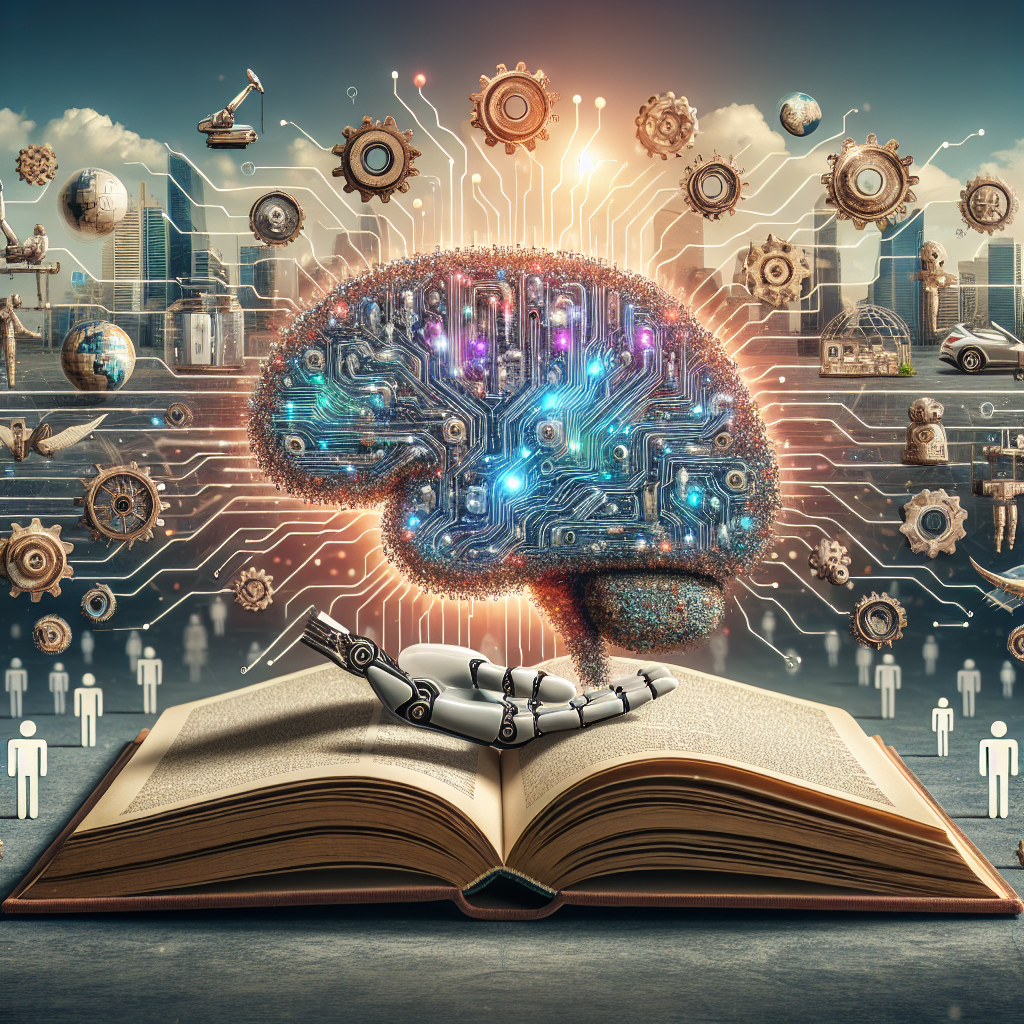
In today’s interconnected and rapidly changing world, the topic of artificial intelligence (AI) has become increasingly prevalent. From self-driving cars to virtual personal assistants, AI has infiltrated various aspects of our daily lives. But what does the term “artificial intelligence” really mean? And what are its implications for individuals, societies, and governments?
Word and Concept Analysis: To truly understand the concept of AI, we must first analyze its key terms. “Artificial” refers to something that is not natural or created by humans. “Intelligence” is the ability to acquire and apply knowledge and skills. Therefore, AI can be defined as the creation of systems or machines that possess human-like intelligence. This includes the ability to learn, reason, and make decisions.
Person Analysis: The development and implementation of AI involves multiple actors, including individuals, societies, governments, and businesses. Individuals are responsible for creating and programming AI systems, while societies and governments must evaluate the impact of AI on their citizens and regulate its use. Businesses also play a crucial role, as they invest in and utilize AI for their own benefit. The effects of AI on these actors can vary greatly, from job displacement to increased efficiency and productivity.
Situation Analysis: AI has the potential to be both true and false, depending on the situation. On one hand, AI has shown remarkable capabilities, such as beating humans in complex games and accurately diagnosing diseases. On the other hand, there have been instances where AI has made mistakes, leading to serious consequences. For example, in 2018, a self-driving car caused a fatal accident, raising questions about the reliability and safety of AI.
Historical Perspective Analysis: AI is not a new concept. The idea of creating intelligent machines dates back to ancient Greek mythology and has been explored in science fiction for centuries. However, it wasn’t until the 1950s that the term “artificial intelligence” was coined and significant progress was made in the field. Despite this, there have been instances where the principles of AI have been adopted prematurely, resulting in failures and setbacks.
Empirical Evidence Analysis: There is a significant amount of research and evidence supporting the potential of AI. However, there is also evidence that highlights the risks and limitations of AI. For example, some studies have shown that AI algorithms can perpetuate biases and discrimination, reflecting the biases of its creators. This raises concerns about the fairness and inclusivity of AI.
Consistency Analysis: When it comes to AI, there are conflicting perspectives and propositions. On one hand, there are those who believe that AI will bring about economic growth and technological advancements. On the other hand, there are those who argue that AI will lead to job loss and exacerbate social inequalities. These conflicting viewpoints must be critically evaluated to understand the true impact of AI.
Conceptual Clarity Analysis: There is often confusion surrounding the concept of AI, with various terms such as “machine learning” and “deep learning” being used interchangeably. It is important to have clear definitions of these terms to avoid misunderstandings and facilitate effective discussions about AI.
Practical Application Analysis: While AI has shown immense potential, there are practical challenges that must be considered. The high costs of developing and implementing AI, the lack of education and expertise in this field, and policy inadequacies are all factors that can hinder the widespread adoption and use of AI.
Subjective and Objective Comments Analysis: The topic of AI is often a subject of debate, with different groups offering subjective and objective comments. Activists may focus on the potential risks and ethical implications of AI, while scientists may emphasize its potential for innovation and discovery. It is important to critically evaluate these comments and consider potential biases.
Emotional Reactions Analysis: The idea of AI often evokes strong emotional responses, ranging from excitement and hope to anxiety and fear. These emotional reactions can have a significant impact on public perception and acceptance of AI.
Systematic Review: AI can be evaluated within different theoretical models and systems. From an economic perspective, AI can be seen as a means of increasing productivity and efficiency. However, from a sociological perspective, AI raises questions about power dynamics and social inequalities. These different viewpoints must be critically analyzed to fully understand the implications of AI.
Interdisciplinary Approach Analysis: AI is a complex topic that can be examined from multiple disciplines, including economics, sociology, and environmental studies. Each discipline offers a unique perspective and understanding of AI, highlighting its multidimensional nature.
Sociological Impact Analysis: The widespread use of AI can have significant social implications. It has the potential to disrupt social structures, exacerbate inequalities, and shape norms and behaviors. Therefore, it is crucial to critically analyze the potential positive and negative effects of AI on society.
Inclusivity and Diversity Analysis: When considering the impact of AI, it is important to examine how it affects different demographic groups. Low-income individuals, rural or urban communities, different genders, ethnic groups, and the elderly and young may be disproportionately impacted by AI. It is essential to create inclusive and fair policies to ensure that AI benefits everyone.
Temporal Factors Analysis: The effects of AI can be analyzed in the short, medium, and long-term. While AI has already shown significant advancements, it is important to consider potential changes and challenges that may arise in the future.
Innovation and Creativity Analysis: AI is a product of human innovation and creativity, and it has the potential to push the boundaries of existing knowledge. However, it also raises questions about the role of humans and the potential consequences of creating intelligent machines.
In conclusion, the concept of AI is complex and multifaceted, and its implications cannot be fully understood without utilizing critical thinking methods. By examining key terms, analyzing the roles of different actors, considering various situations, and evaluating empirical evidence and different perspectives, we can gain a deep and analytical understanding of AI and its potential impact on our world.
